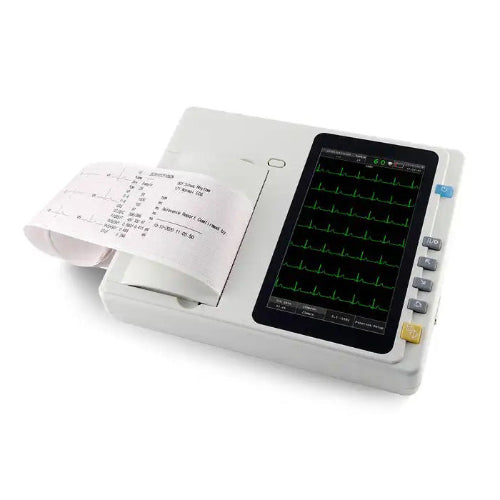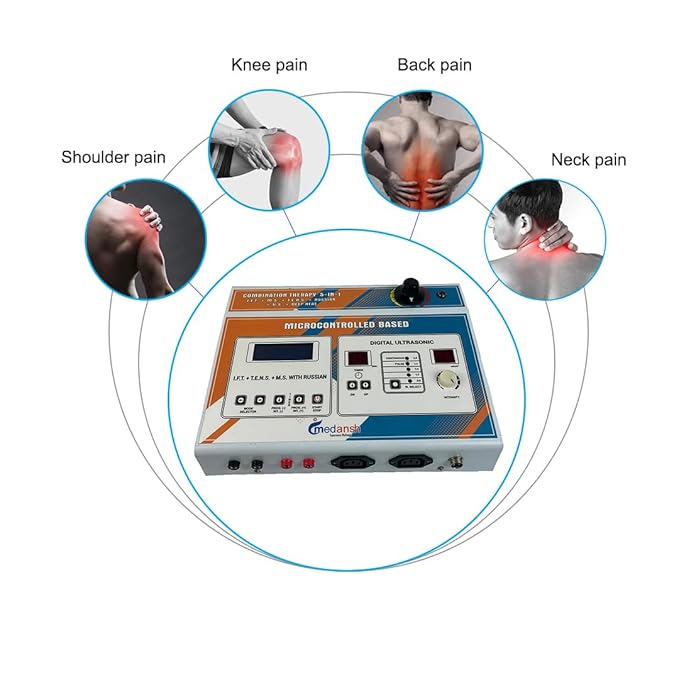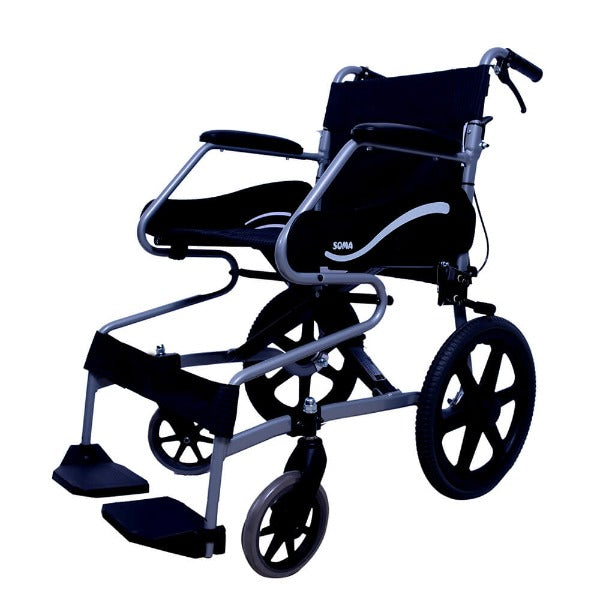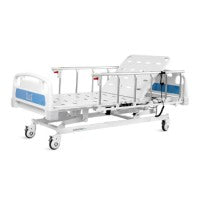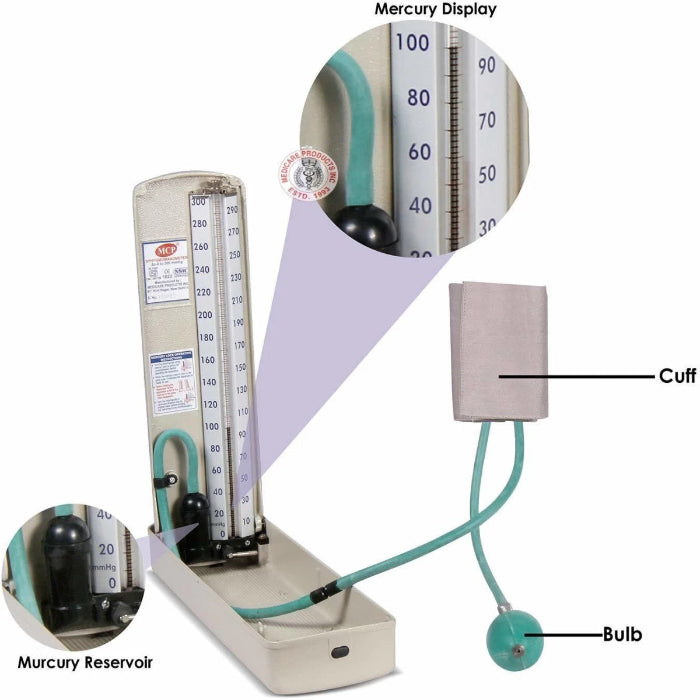Filter
165 products
Type: Occupational
Multi Colour Peg Board
Type: Occupational
Wooden Scooter Board
Type: Occupational
Velcro Hand Exercise Board Premium Quality
Type: Occupational
Platform Swing Deluxe Quality
Type: Occupational
Medicine Ball Exercise Ball
Type: Occupational
Hand Robotics Rehabilitation Gloves
Type: Occupational
Hand Gym Kit Board Premium Quality
Type: Occupational
Traction Bed Three Fold
Type: Occupational
Theraputty Combo (Soft, Medium, Firm)
Type: Occupational
Shoulder Wheel Large Size 360
Type: Occupational
Multi Color Peg Board (100 Pegs)
Type: Occupational
Medansh Manual Tilt Table
Type: Occupational
Motorized Pedo Cycle with Hand Pedals
Type: Occupational
Medansh Exercise Quadriceps Chair
Type: Occupational
Disc Swing Deluxe Quality
Collection:
Occupational
Occupational Therapy Equipment – Empowering Independence, One Step at a Time
Every step forward in rehabilitation matters. Occupational therapy (OT) turns those steps into daily wins by helping people do the things that make life meaningful—dressing, eating, writing, learning, playing, working, and moving with confidence. Whether it’s a child with cerebral palsy learning to use both hands or an adult after a stroke relearning to walk safely, the right equipment transforms effort into progress and progress into independence.
At MeddeyGo, we recognize that no two recovery journeys look the same. Therefore, our carefully curated portfolio of rehabilitation and occupational therapy equipment is built to meet people where they are—therapists in clinics, caregivers at home, teachers in classrooms, and patients determined to regain control. With the right tools, therapy becomes engaging, measurable, and effective—step by step, move by move.
What Is Occupational Therapy?
Occupational therapy helps people participate in everyday activities (often called “occupations”). It blends science and compassion to improve motor skills, coordination, sensory processing, and cognitive function. As a result, people can better care for themselves, communicate, engage at school or work, and enjoy social life.
In pediatric care, OT often supports children with cerebral palsy (CP), autism spectrum disorder (ASD), ADHD, and developmental delays. In adult rehabilitation, it supports individuals after stroke, spinal cord injury, traumatic brain injury (TBI), surgery, or progressive neurological conditions. Because OT focuses on function, it connects therapy to real life—tying shoelaces, feeding independently, handwriting at school, or using a phone with precision.
Who Benefits from OT Equipment?
- Children with CP and developmental delays: Equipment shapes posture, builds strength, and improves hand use.
- Children with sensory processing differences: Tools regulate arousal, boost focus, and support play-based learning.
- Adults after stroke, TBI, or spinal cord injury: Devices retrain movement, balance, and coordination for safer mobility.
- Orthopedic and post-surgical patients: Aids reduce pain, protect joints, and restore confidence in daily tasks.
- Older adults: Adaptive tools maintain independence in dressing, bathing, and meal preparation.
Because recovery is not linear, equipment that adjusts with growth and progress keeps therapy safe, motivating, and sustainable.
Upper Limb Rehabilitation: Building Hand, Wrist, and Arm Function
Strong, coordinated hands are central to independence—fastening buttons, writing clearly, opening containers, or preparing food. Purposeful repetition builds neural pathways and muscle memory, so tools that make practice playful and progressive are essential.
Hand Gym Kits
Hand gym kits combine therapy putty, spring grippers, pinch clips, web exercisers, and finger bands. Together, they target grip strength, pinch precision, finger isolation, and wrist control. Short sets, repeated often, improve control, endurance, and dexterity without fatigue. Because resistance can be increased gradually, the same kit supports both early and advanced stages.
Therapy Putty and Finger Bands
Color-coded putty grades resistance and delivers rich sensory feedback. It strengthens intrinsic hand muscles while calming fidgety hands. Finger bands, meanwhile, train opening strength to balance the grip trained by putty and grippers. Consequently, wrists feel more stable and fingers move with greater precision.
Peg Boards and Fine-Motor Boards
Peg boards, lacing boards, and screw-turn boards build bilateral coordination, visual-motor integration, and attention. Kids enjoy the game-like challenge of patterns, colors, and timed tasks. Adults recovering after neurological injury use graded peg sizes to rebuild accuracy and speed.
Wrist, Forearm, and Shoulder Tools
Flexion-extension rollers, pronation-supination trainers, and shoulder pulleys restore controlled range of motion. Lightweight dowels and therapy balls add variety, while forearm supports reduce compensations. Over time, smoother joint motions translate to safer reaching, lifting, and carrying.
Lower Limb Rehabilitation: Restoring Balance, Strength, and Gait
Walking again—safely and confidently—is a profound milestone. Lower-limb rehab equipment provides structure, feedback, and security so people can relearn weight shift and step patterns while preventing falls.
Parallel Bars
Parallel bars are foundational for gait retraining. They provide stability while the person practices standing balance, step initiation, turning, and endurance sets. Adjustable height meets different body sizes and stages. Therapists can add targets on the floor to encourage symmetrical steps and proper foot placement.
Motorized and Manual Gait Trainers
When legs need patterned assistance, gait trainers step in—literally. Motorized units guide rhythmic stepping to drive neuroplastic change. Manual trainers with harness support reduce fear of falling and free the therapist to cue posture and alignment. Both options build endurance, improve cardiovascular health, and gradually increase independence.
Balance Boards and Foam Pads
Instability builds stability. Rocker boards, wobble discs, and foam pads challenge ankle strategies and core control. Because the surface gives subtle feedback, people learn to react quickly and keep center of mass within their base of support—key for community mobility.
Pedal Exercisers and Mini-Cycles
Seated pedo-cycles and mini-bikes build stamina without joint overload. They’re compact, affordable, and ideal for home programs. Timed sessions help people track progress, while low resistance encourages high-repetition practice that supports neuro recovery.
Sensory Integration and Stimulation: Calming, Organizing, and Focusing
When the senses are dysregulated, learning and participation become hard. Sensory tools help the nervous system find an optimal arousal zone—calm yet alert—so children can attend, follow directions, and enjoy play.
Vestibular Swings
Platform, cocoon, and hammock swings provide graded vestibular input. Gentle linear motion calms. Slow rotation challenges postural responses. Because therapists can vary direction, speed, and duration, swings support both regulation and motor planning.
Tactile and Proprioceptive Tools
Textured bins, sensory brushes, weighted lap pads, and compression vests offer tactile and deep-pressure input. These inputs can reduce seeking or avoidance behaviors, steady attention, and prepare the body for fine-motor work. Short, structured “sensory diets” across the day help maintain gains.
Ball Pools and Soft Play Structures
Soft blocks, tunnels, wedges, and ball pools transform therapy into joyful exploration. Crawling, climbing, and rolling build strength and bilateral coordination, while safe crash landings teach controlled movement. Most importantly, kids develop confidence in a play-rich setting.
Posture and Mobility Aids: Enabling Safe, Functional Alignment
Good posture is not cosmetic; it is functional. Proper alignment supports breath, digestion, vision, and hand use. Therefore, seating and standing systems belong at the heart of pediatric and adult OT.
Standing Frames
Supported standing promotes bone density, hip alignment, digestion, and alertness. Standers—prone, supine, or upright—allow safe weight-bearing for people who cannot stand independently. Adjustable supports grow with the person and protect joints, while trays facilitate play, schoolwork, or communication device access.
CP Chairs (Cerebral Palsy Chairs)
CP chairs offer customizable postural control with adjustable backrests, lateral supports, harnesses, footplates, and headrests. Because the fit is individualized, kids can attend in class longer, use both hands more effectively, and engage socially with peers at eye level.
Walkers, Rollators, and Wheelchairs Add-Ons
Posterior walkers encourage upright posture and longer steps, while anterior frames boost stability in early stages. For wheelchair users, pelvic belts, anti-thrust cushions, head rests, and arm supports optimize alignment and reduce fatigue. Small changes in seating often yield big functional gains.
Activities of Daily Living (ADL) Aids: Making Everyday Tasks Easier
Independence grows when the environment adapts. ADL aids bridge the gap between current ability and task demands, so success arrives sooner and sticks longer.
- Feeding and kitchen aids: Built-up handles, angled spoons, scoop plates, nosey cups, and non-slip mats stabilize hand-to-mouth movement.
- Dressing aids: Button hooks, zipper pulls, sock aids, and long-handled shoehorns reduce frustration and strain.
- Bathing and toileting: Grab bars, shower stools, raised seats, and transfer benches enhance safety and dignity.
- Writing and school tools: Pencil grips, slant boards, adaptive scissors, and paper guides improve legibility and endurance.
- Communication access: Mounting arms and switch interfaces stabilize tablets and speech devices for reliable use.
Because these tools are simple, affordable, and impactful, they are ideal for home carryover between clinic sessions.
Cognitive, Visual, and Coordination Training
OT also supports attention, memory, sequencing, and visual-perceptual skills. As thinking grows clearer, daily routines become smoother.
- Activity and sequencing boards: Picture schedules and task cards build independence through clear steps.
- Puzzles, sorting, and pattern games: These improve visual discrimination, scanning, and problem-solving.
- Eye–hand coordination trainers: Beanbag targets, ring toss, and ball-wall rebounds sharpen timing and accuracy.
- Dual-task challenges: Walking while naming items or sorting while standing integrates cognition and movement for real-world demands.
Home Programs: Consistency That Compounds
Therapy works best when small bursts of practice repeat across the week. Consequently, compact, safe, and easy-to-set-up equipment is ideal for home use. A simple plan might include:
- Warm-up (5 minutes): Deep pressure input or gentle swing for regulation.
- Strength (10 minutes): Putty squeezes, finger bands, or pedal exerciser.
- Skill (10 minutes): Peg patterning, handwriting on a slant board, or button-hook practice.
- Cool-down (5 minutes): Breathing, stretches, and a preferred calming activity.
Because you can track duration and repetitions, progress becomes visible and motivating. Add stickers, charts, or app-based logs to celebrate consistency.
Safety, Set-Up, and Maintenance
- Clear the area: Remove clutter, secure rugs, and mark safe zones.
- Check equipment before use: Inspect fasteners, straps, and moving parts.
- Use proper footwear: Non-slip soles protect during standing and walking work.
- Clean regularly: Soap-and-water, alcohol wipes, or brand-recommended cleaners maintain hygiene.
- Store smartly: Keep small parts in labeled boxes; hang swings from rated anchors only.
- Follow guidance: Consult your therapist for correct intensity, frequency, and progression.
Measuring What Matters: Goals and Outcomes
Meaningful goals keep therapy focused. Use the SMART framework—Specific, Measurable, Achievable, Relevant, Time-bound. For example: “In six weeks, the child will button three buttons on a school shirt within two minutes using a button hook, on four of five trials.”
Because data drives decisions, log repetitions, durations, and successful attempts. Photos and short videos capture posture changes and hand use over time. Share logs with your therapist to fine-tune programs quickly.
Choosing the Right OT Equipment: A Practical Buying Guide
The market is broad. A clear process simplifies the choice.
- Start with an evaluation: Ask your OT to identify top functional priorities (e.g., handwriting, feeding, walking).
- Match goals to tools: Select only a few items that target those priorities.
- Insist on adjustability: Growth-friendly gear stretches your budget and supports progression.
- Prioritize safety and durability: Rounded edges, stable bases, certified anchors, and washable surfaces matter.
- Plan home storage: Collapsible designs and carry cases reduce clutter and increase use.
- Check compatibility: Ensure mounts, straps, and accessories work together.
- Review support and warranty: Quick service protects uptime.
- Budget wisely: Mix premium anchors (e.g., standers) with cost-effective accessories (e.g., grips, bands) for best value.
The MeddeyGo Difference
We go beyond selling products; we support progress. Our approach is simple and uncompromising:
- Clinically curated portfolio: We collaborate with therapists and rehab specialists to shortlist safe, effective tools.
- Clear content and specs: Photos, size charts, use-cases, and how-to guides make selection intuitive.
- Expert guidance: Need help? Our helpline answers product questions and shares practical therapy tips.
- Nationwide reach: We serve thousands of pin codes with reliable packaging and fast delivery.
- Fair, transparent pricing: Quality should be accessible. We keep costs clear and offer value bundles.
- After-sales support: Warranty assistance, parts guidance, and replacements keep therapy on track.
Because lives depend on dependable tools, we treat service and reliability as seriously as product quality.
Benefits of Buying Occupational Therapy Equipment from MeddeyGo
Choosing the right partner is as important as choosing the right device. Here’s how MeddeyGo makes your therapy investment count.
Trusted Quality and Precision
We source from experienced manufacturers and verify materials, finishes, and safety features. As a result, equipment arrives ready for clinical use and daily home practice. Whether it’s a motorized gait trainer, a robust standing frame, or a simple peg board, performance remains consistent across sessions.
Affordability Without Compromise
Therapy can be long. Costs add up. Therefore, our price policy favors sustainability: competitive pricing, seasonal offers, and value kits. Students, start-ups, and families can build effective setups without overspending.
Comprehensive Range Under One Roof
From hand gym kits and vestibular swings to CP chairs and ADL aids, our portfolio covers pediatric to adult needs and clinic to home environments. Because everything sits in one place, you save time, compare quickly, and choose confidently.
After-Sales Support and Warranty
Service does not end at checkout. We assist with assembly, fit checks, warranty claims, and replacement parts. If something goes wrong, we help set it right—fast—so therapy stays consistent.
Trusted by Professionals and Families
Clinics, therapy centers, schools, and thousands of homes rely on MeddeyGo across India. Verified reviews, careful packaging, and clear return windows build trust. Ultimately, people receive what they ordered—safely and on time—so progress does not stall.
In short: when quality, price, and service align, therapy outcomes improve. Choose MeddeyGo and equip progress—one practical tool at a time.
Frequently Asked Questions (FAQs)
What is occupational therapy, and who needs it?
Occupational therapy helps people do everyday activities more independently. It supports children with CP, ASD, ADHD, and developmental delays, as well as adults after stroke, TBI, spinal injuries, or orthopedic surgery.
What kinds of OT equipment does MeddeyGo offer?
We offer hand gym kits, therapy putty, peg boards, parallel bars, gait trainers, vestibular swings, standing frames, CP chairs, balance boards, pedal exercisers, ADL aids, and cognitive-visual training tools.
Can these tools be used at home?
Yes. Many products are designed for safe home use. With therapist guidance, short daily sessions at home multiply clinic gains and improve carryover into real life.
Are these products suitable for adults as well as children?
Absolutely. While some items are pediatric-specific, many—like pedal exercisers, balance boards, hand exercisers, and ADL aids—serve adults recovering from stroke or injury.
How do sensory integration tools help children?
Swings, weighted items, and tactile bins regulate the nervous system. When arousal stabilizes, attention improves, and learning becomes easier. Sessions then feel enjoyable rather than overwhelming.
How do I choose the right equipment for my child or patient?
Begin with a therapist evaluation. Prioritize two or three goals, then select tools that target those goals directly. Consider adjustability, safety, and storage to ensure daily use.
Does MeddeyGo provide warranty and after-sales support?
Yes. We honor manufacturer warranties and help with troubleshooting, parts, and replacements. Our goal is simple: keep therapy consistent.
Why choose MeddeyGo over a generic marketplace?
Because curation, clarity, and support matter in healthcare. We combine expert guidance, detailed content, trusted brands, and responsive service so your purchase delivers outcomes—not guesswork.
How to Get Started Today
- List your top three functional goals. Keep them concrete and time-bound.
- Share the list with your therapist. Ask for specific equipment suggestions.
- Choose two to four tools that align with those goals and your space.
- Set a weekly routine. Short, frequent sessions create lasting change.
- Track progress. Use a simple log to record repetitions, durations, and wins.
When therapy feels approachable and consistent, motivation stays high. With MeddeyGo’s curated tools and clear support, independence becomes achievable—one simple practice at a time.
Manufacturer & origin information
Meddey Technologies Pvt Ltd, C-75, First Floor, DDA Sheds, Industrial Area, Phase 1, Okhla, New Delhi – 110020.
Phone: +91 8586-012345
Country of Origin: India.

